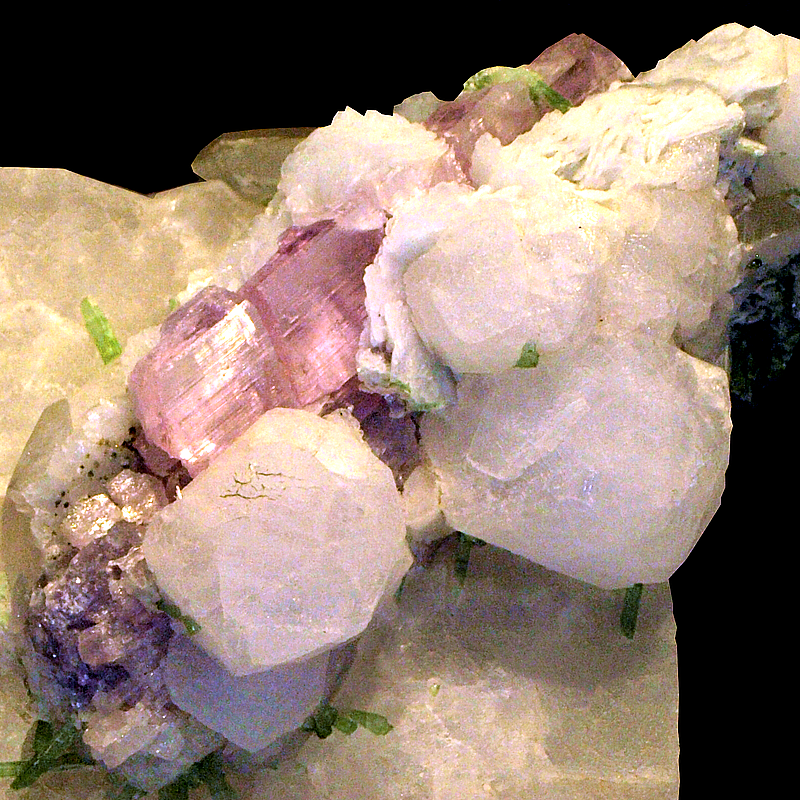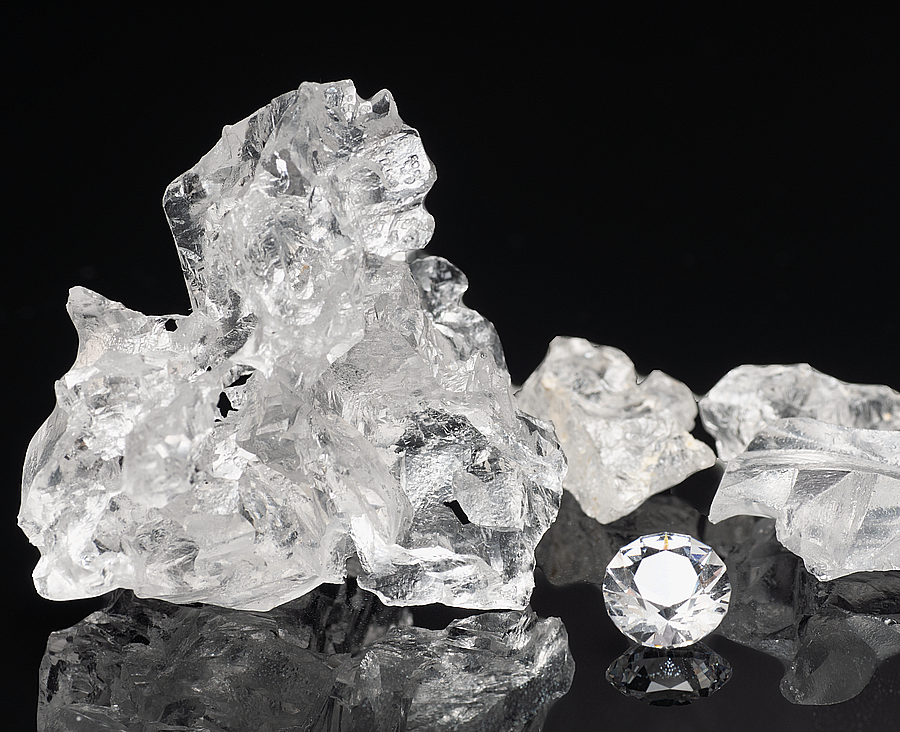Pollucite is a quite rare mineral that belongs to the zeolite group. It normally contains cesium and sodium, which however are sometimes partially replaced by calcium, rubidium or potassium.
This mineral, so little used that its treatment does not even appear among the 430 crystals that are included in Healing Crystals (M. Gienger), is often presented in specialized sites as suitable for establishing angelic connections. No wonder: in these types of sites, I’m sorry to see, the very high vibrations and angelic connections are scattered everywhere. One gets the impression that it is enough to buy a crystal to be automatically transported to Heaven.
Actually pollucite has nothing to do with angels. But despite this it can be a very very useful mineral for a certain type of people who need creativity or for those who get depressed and forget themselves too easily, flattening themselves in the routine of a life without flashes.

image G. Penko
properties
Undoubtedly, pollucite pushes us to put ourselves at the center of the scene. Not so much out of true self-centeredness, but rather because it stimulates the kind of instantaneous ideas, perceptions and emotions that present themselves with the force of urgency and, sometimes, intuition and electrocution. In the face of these flashes, sometimes, everything else seems to take second place, including the expectations of others and planned choices.
It is therefore a stone that produces a certain discontinuity, but also a propensity for creativity, passion, extraordinary performance and unconventional ideas. It is an earthly crystal.
It opposes what is waiting, caution, distance.
It helps to give free space to inspiration and express your creativity to the fullest. It promotes greater fluidity in communication, helps the ability to speak, makes you more inclined to socialize and openness.
It generally produces greater attention to the elements of material life, including conveniences. Increases cunning and readiness in managing situations. It brings energy, unpredictability and momentum.
Pollucite, only in those who use it by continuously applying appropriate rituals, brings benefits in respiratory functions and sensory sensitivity, especially tactile. It also produces a more refined color sensitivity and greater emotional response to sound and color.
use
It is a type of mineral that requires great dedication. It must be used continuously and its effects must be enhanced with the application of appropriate rituals. The effects begin to appear after two/three weeks and reach their maximum within about 40 days.
Since the effects are intrinsically oriented towards producing jerks and flashes, rather than calm continuity, it is easy for moments of great effectiveness to alternate with phases in which the crystal seems to act little, but in reality it is still operating and is preparing our mind for the next flash, which will manifest itself as soon as our charge of inner energy finds the adequate stimulus in external reality.
rituals
Pollucite is a strongly characterized crystal with a strong personality. Consequently there are several kinds of rituals with which it is incompatible.
The principal appropriate ritual is that of Sunlight, while that of Moonlight is highly incompatible.
A very simple applicable ritual can be performed as follows:
- prepare three ceramic or glass saucers (not plastic and not paper or flammable material), a lighter and an alarm clock or stopwatch;
- prepare three sheets of notebook or block-type paper;
- wrap a pinch of tea leaves in each sheet and roll them into balls thus preparing three paper balls;
- arrange the saucers to form a triangle and place the pollucite crystal in the center;
- put a scoop in each saucer; start an alarm clock or a stopwatch that will sound after 2 minutes;
- concentrate strongly on a color of your choice, trying to visualize it;
- when the stopwatch sounds, trying not to completely lose the color display, set fire to the three paper balls.
- try to recover the visualization of the color, together with the flames; wait for them to go out;
- close your eyes, bow, retrieve your crystal.
cleaning and maintenance
It is a fairly hard mineral and there is no reason to fear too much for physical integrity, if not for the highest quality stones used as gems. Remove dust with a soft brush and then, if appropriate, wash with warm water and a neutral detergent. As always, take care to rinse well and dry carefully.
commercial considerations and notes
The vast majority of pollucite stocks are found in Canada. This mineral is used for the extraction of cesium. The name comes from Pollux, twin brother of Castor, a character present in Greek, Roman and Etruscan mythologies. Pollux was a boxer, while Castor was a horse tamer. Together with pollucite, the name castorite was given to another mineral that is often found associated with it. However, later the name of castorite was changed to Petalite, while pollucite kept its name.
pictures

image and cut of the gem:
G. Bogni (www.mineraliepietre.com)
information table
| pollucite | |
| family / affinity | – |
| chemistry | tectosilicates (zeolites) |
| variety of | – |
| type of material | mineral |
| hardness | 6.5 – 7 |
| colors | colorless, white, gray, pinkish, pale blue, pale purple |
| power class | ++ |
| required level | + |
| constancy | high |
| flux | from inside to outside |
| dynamic level | disparity, diversity |
| elements | earth, fire |
| zodiac | sagittarius, gemini |
| pianets | Sun, Neptune |
